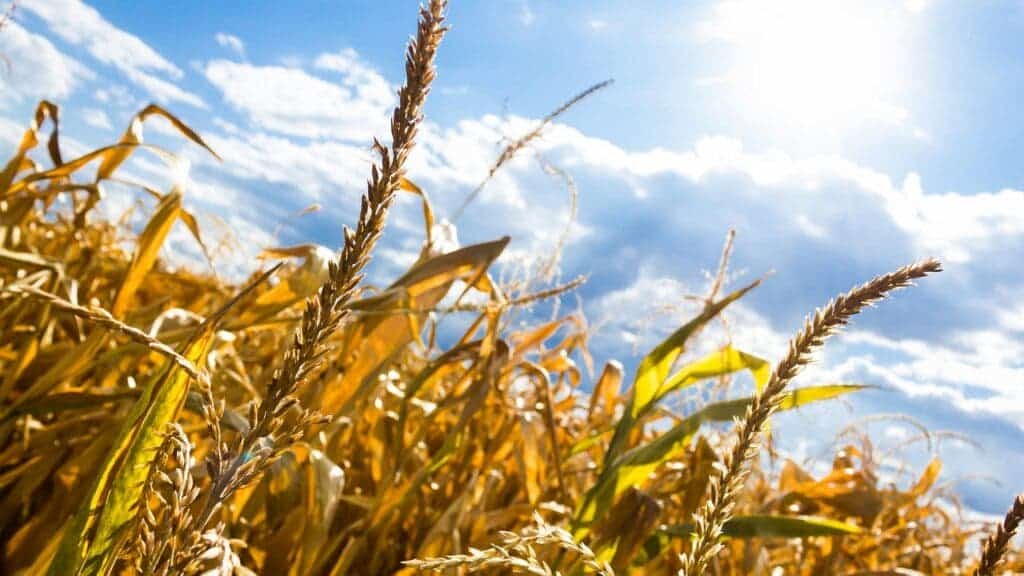Climate change could severely impact our food and water security in the future by increasing the probability of droughts co-occurring in food-producing areas around the world, a new study says.

Research led by scientists at the Washington State University (WSU) warns that the future may hold less bountiful tables, and fewer meals, for us all. According to the findings, the probability of droughts co-occurring will increase by 40% by the mid 21st century, and by 60% by the end of the century, relative to the late 20th century (before the year 2000). All in all, this amounts to an almost-ninefold increase in the exposure of agricultural lands and human populations to severe, co-occurring droughts relative to today.
While modern technology and distribution systems insulate us from the effects of drought to a much larger extent than any time previously in history, co-occurring (or ‘compound’) droughts, if they affect key food-producing areas, can severely impact the global food and water availability. If such an event were to come to pass, millions of people would encounter some difficulty in accessing food in the same quantities and varieties as before.
Table troubles
“There could be around 120 million people across the globe simultaneously exposed to severe compound droughts each year by the end of the century,” said lead author Jitendra Singh, a former postdoctoral researcher at the WSU School of the Environment now at ETH Zurich, Switzerland. “Many of the regions our analysis shows will be most affected are already vulnerable and so the potential for droughts to become disasters is high.”
This increased risk of compound droughts is mainly the result of climate change, which itself is the product of greenhouse gas emissions associated with decades of reliance on fossil fuels. The other element factoring in is a projected 22% increase in the frequency of El Niño and La Niña events — the two opposite phases of the El Niño Southern Oscillation (ENSO) — caused by warmer average temperatures.
Roughly 75% of compound droughts in the future will occur during these irregular but recurring periods of variation in the world’s oceans, the team explains. The shifting phases of the ENSO have historically played a part in some of the greatest periods of environmental upheaval globally, as they influence precipitation patterns across a huge stretch of the planet. Compound droughts occurring across Asia, Brazil, and Africa during 1876-1878 were generated by these shifts. They led to massive crop failures and famines which killed in excess of 50 million people.
“While technology and other circumstances today are a lot different than they were in the late 19th century, crop failures in multiple breadbasket regions still have the potential to affect global food availability,” said study coauthor Deepti Singh, an assistant professor in the WSU School of the Environment. “This could in turn increase volatility in global food prices, affecting food access and exacerbating food insecurity, particularly in regions that are already vulnerable to environmental shocks such as droughts.”
The team focused their analysis on the ten areas of the world that receive most of their rainfall between June and September, have monthly summer precipitation showing great variability, and fall under the influence of ENSO variations — factors that leave them exposed to co-occurring droughts. Several of these are important agricultural areas on a global level, they add, and they also include countries that are already experiencing food and water insecurity.
Of the investigated areas, North and South America were among the most likely to experience compound droughts in the future. Certain regions of Asia are also at risk, however, large stretches of agricultural land here are projected to become wetter instead of drier, heavily mitigating the risk of crop failure and subsequent famine.
Still, that leaves us in quite a dire situation. The United States today is a major exporter of grains, including maize, for multiple countries around the world. In the event of a severe drought, reduced production here would impact food security around the world, with increases in the price of grains and a significant decrease in food security — grains are staple foods and lack of such foods heavily impacts the most vulnerable groups throughout communities.
“The potential for a food security crisis increases even if these droughts aren’t affecting major food producing regions but rather many regions that are already vulnerable to food insecurity,” said coauthor Weston Anderson, an assistant research scientist at the Earth System Science Interdisciplinary Center at the University of Maryland.
“Simultaneous droughts in food insecure regions could in turn amplify stresses on international agencies responsible for disaster relief by requiring the provision of humanitarian aid to a greater number of people simultaneously.”
Still, for what it’s worth, these estimates are assuming that the world maintains a high rate of fossil fuel usage. If carbon emissions continue to fall, the risk and intensity of co-occurring droughts would be greatly mitigated, the team explains. Knowing that nearly 75% of compound droughts occur alongside ENSO events also gives us the chance to predict where such droughts may occur and prepare for them in advance.
“This means that co-occurring droughts during ENSO events will likely affect the same geographical regions they do today albeit with greater severity,” said Deepti Singh. “Being able to predict where these droughts will occur and their potential impacts can help society develop plans and efforts to minimize economic losses and reduce human suffering from such climate-driven disasters.”
The paper “Enhanced risk of concurrent regional droughts with increased ENSO variability and warming” has been published in the journal Nature Climate Change.


